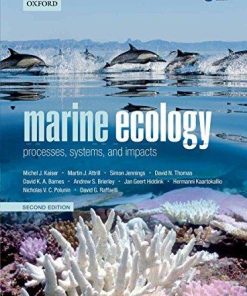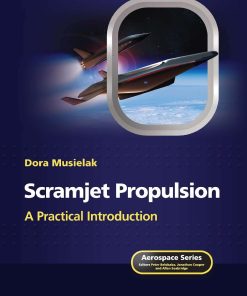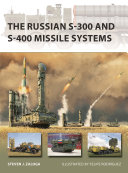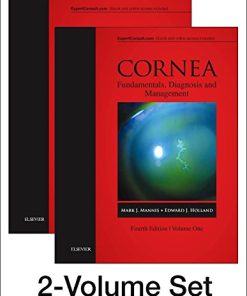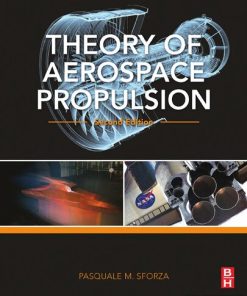(Ebook PDF) Marine propellers and propulsion 4th Edition by John Carlton ISBN 9780081003749 0081003749 full chapters
$50.00 Original price was: $50.00.$25.00Current price is: $25.00.
(Ebook PDF) Marine propellers and propulsion 4th Edition by John Carlton-Ebook PDF Instant Download/Delivery:9780081003749, 0081003749
Instant download Full Chapter of Marine propellers and propulsion 4th Edition after payment
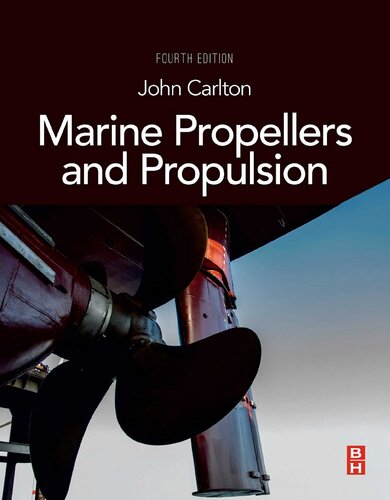
Product details:
ISBN 10:0081003749
ISBN 13:9780081003749
Author: John Carlton
Marine Propellers and Propulsion, Fourth Edition, offers comprehensive, cutting edge coverage to equip marine engineers, naval architects or anyone involved in propulsion and hydrodynamics with essential job knowledge. Propulsion technology is a complex, multidisciplinary topic with design, construction, operational and research implications. Drawing on experience from a long and varied career in consulting, research, design and technical investigation, John Carlton examines hydrodynamic theory, materials and mechanical considerations, and design, operation and performance. Connecting essential theory to practical problems in design, analysis and operational efficiency, the book is an invaluable resource, packed with hard-won insights, detailed specifications and data.
Table of Contents:
- Chapter 1: The Early Development of the Screw Propeller
- Bibliography
- Chapter 2: Propulsion Systems
- 2.1. Fixed Pitch Propellers
- 2.2. Ducted Propellers
- 2.3. Podded and Azimuthing Propulsors
- 2.4. Contrarotating Propellers
- 2.5. Overlapping Propellers
- 2.6. Tandem Propellers
- 2.7. Controllable Pitch Propellers
- 2.8. Surface Piercing Propellers
- 2.9. Waterjet Propulsion
- 2.10. Cycloidal Propellers
- 2.11. Paddle Wheels
- 2.12. Magnetohydrodynamic Propulsion
- 2.13. Rim-Driven Propulsors
- 2.14. Whale-Tail and Fish Propulsion
- 2.15. Hybrid Propulsion
- Bibliography
- Chapter 3: Propeller Geometry
- 3.1. Frames of Reference
- 3.2. Propeller Reference Lines
- 3.3. Pitch
- 3.4. Rake and Skew
- 3.5. Propeller Outlines and Area
- 3.6. Propeller Drawing Methods
- 3.7. Section Geometry and Definition
- 3.8. Blade Thickness Distribution and Thickness Fraction
- 3.9. Blade Interference Limits for Controllable Pitch Propellers
- 3.10. Controllable Pitch Propeller Off-Design Section Geometry
- 3.11. Miscellaneous Conventional Propeller Geometry Terminology
- Bibliography
- Chapter 4: The Propeller Environment
- 4.1. The Oceans
- 4.2. Density of Water
- 4.3. Salinity
- 4.4. Water Temperature
- 4.5. Viscosity
- 4.6. Vapor Pressure
- 4.7. Dissolved Gases in Sea Water
- 4.8. Surface Tension
- 4.9. Light Penetration
- 4.10. Oxygen
- 4.11. Carbon Dioxide
- 4.12. Weather
- 4.13. Silt and Marine Organisms
- Bibliography
- Chapter 5: The Ship Wake Field
- 5.1. General Wake Field Characteristics
- 5.2. Wake Field Definition
- 5.2.1. Velocity Ratio Method
- 5.2.2. Taylors Method
- 5.2.3. Froude Method
- 5.2.4. Mean Velocity or Wake Fraction
- 5.2.5. Fourier Analysis of Wake Field
- 5.3. The Nominal Wake Field
- 5.4. Estimation of Wake Field Parameters
- 5.5. Effective Wake Field
- 5.6. Wake Field Scaling
- 5.7. Wake Quality Assessment
- 5.8. Wake Field Measurement
- 5.8.1. Pitot Methods of Measurement
- 5.8.2. Hot Wire and Film Anemometry
- 5.8.3. Laser-Doppler Methods (LDV)
- 5.8.4. Particle Image Velocimetry (PIV)
- Bibliography
- Chapter 6: Propeller Performance Characteristics
- 6.1. General Open Water Characteristics
- 6.2. The Effect of Cavitation on Open Water Characteristics
- 6.3. Propeller Scale Effects
- 6.4. Specific Propeller Open Water Characteristics
- 6.4.1. Fixed Pitch Propellers
- 6.4.2. Controllable Pitch Propellers
- 6.4.3. Ducted Propellers
- 6.4.4. High-Speed Propellers
- 6.5. Standard Series Data
- 6.5.1. Wageningen B-Screw Series
- 6.5.2. Wageningen F Series
- 6.5.3. Wageningen C and D Series
- 6.5.4. Japanese AU-Series
- 6.5.5. Gawn Series
- 6.5.6. KCA Series
- 6.5.7. Lindgren Series (Ma-Series)
- 6.5.8. Newton-Rader Series
- 6.5.9. Other Fixed Pitch Series and Data
- 6.5.10. Propellers Having Significant Shaft Incidence
- 6.5.11. Wageningen Ducted Propeller Series
- 6.5.12. Gutsche and Schroeder Controllable Pitch Propeller Series
- 6.5.13. The JD-CPP Series
- 6.5.14. Other Controllable Pitch Propeller Series Tests
- 6.6. Multiquadrant Series Data
- 6.7. Slipstream Contraction and Flow Velocities in the Wake
- 6.8. Behind-Hull Propeller Characteristics
- 6.9. Propeller Ventilation
- Bibliography
- Chapter 7: Theoretical Methods-Basic Concepts
- 7.1. Basic Aerofoil Section Characteristics
- 7.2. Vortex Filaments and Sheets
- 7.3. Field Point Velocities
- 7.4. The Kutta Condition
- 7.5. The Starting Vortex
- 7.6. Thin Aerofoil Theory
- 7.7. Pressure Distribution Calculations
- 7.8. Boundary Layer Growth Over an Aerofoil
- 7.9. The Finite Wing
- 7.10. Models of Propeller Action
- 7.11. Source and Vortex Panel Methods
- 7.12. Euler, Lagrangian, and Navier-Stokes Methods
- Bibliography
- Chapter 8: Theoretical and Analytical Methods Relating to Propeller Action
- 8.1. Momentum Theory-; R.E. Froude (1887)
- 8.2. Blade Element Theory-
- 8.3. Propeller Theoretical Development (1900-1930)
- 8.4. Burrills Analysis Procedure (1944)
- 8.5. Lerbs Analysis Method (1952)
- 8.6. Eckhardt and Morgans Design Method (1955)
- 8.7. Lifting Surface Correction Factors-Morgan et al.
- 8.8. Lifting Surface Models
- 8.9. Lifting Line-Lifting Surface Hybrid Models
- 8.10. Vortex Lattice Methods
- 8.11. Boundary Element Methods
- 8.12. Methods for Specialist Propulsors
- 8.12.1. Controllable Pitch Propellers
- 8.12.2. Ducted Propellers
- 8.12.3. Pumpjets
- 8.12.4. Ring Propellers
- 8.12.5. Contrarotating Propellers
- 8.12.6. High-Speed and Supercavitating Propellers
- 8.12.7. Surface Piercing Propellers
- 8.13. Computational Fluid Dynamics Analysis
- Bibliography
- Chapter 9: Cavitation
- 9.1. The Basic Physics of Cavitation
- 9.2. Types of Cavitation Experienced by Propellers
- 9.2.1. Sheet Cavitation
- 9.2.2. Bubble Cavitation
- 9.2.3. Cloud Cavitation
- 9.2.4. Propeller Vortex Cavitation Types
- 9.2.4.1. Hub Vortex Cavitation
- 9.2.4.2. Tip Vortex Cavitation
- 9.2.4.3. Leading Edge Vortex
- 9.2.4.4. Trailing Vortex
- 9.2.5. Propulsor-Hull Vortex Cavitation
- 9.2.6. Full Scale Observations of Cavitation
- 9.3. Cavitation Considerations in Design
- 9.4. Cavitation Inception
- 9.5. Cavitation-Induced Damage
- 9.6. Cavitation Testing of Propellers
- 9.7. Analysis of Measured Pressure Data From a Cavitating Propeller
- 9.8. The Prediction of Cavitation
- Bibliography
- Chapter 10: Propeller Noise
- 10.1. Physics of Underwater Sound
- 10.2. Nature of Propeller Noise
- 10.2.1. Noncavitating Propeller Noise
- 10.2.2. Cavitation Noise
- 10.3. Noise Scaling Relationships
- 10.4. Noise Prediction and Control
- 10.5. Transverse Propulsion Unit Noise
- 10.6. Measurement of Radiated Noise
- 10.7. Radiated Noise in Relation to Marine Mammals
- 10.7.1. Marine Mammals
- 10.7.2. Marine Mammal Phonation
- Bibliography
- Chapter 11: Propeller, Ship, and Rudder Interaction
- 11.1. Bearing Forces and Moments
- 11.1.1. Propeller Weight
- 11.1.2. Dry Propeller Inertia
- 11.1.3. Added Mass, Inertia, and Damping
- 11.1.4. Propeller Forces and Moments
- 11.1.5. Propeller Forces and Moments Induced by Turning Maneuvers
- 11.1.6. Out-of-Balance Forces and Moments
- 11.1.7. Influence of the Propeller on Shaft Alignment
- 11.2. Hydrodynamic Interaction
- 11.2.1. Noncavitating Blade Contribution
- 11.2.2. Cavitating Blade Contribution
- 11.2.3. Influence of the Hull Surface
- 11.2.4. The Characteristics of the Hull Surface Pressure Signature
- 11.2.5. Methods for Predicting Hull Surface Pressures
- 11.3. Propeller-Rudder Interaction
- 11.3.1. The Single-Phase Approach
- 11.3.2. The Two-Phase Approaches
- 11.3.3. Model Testing
- 11.3.4. Some Full-Scale Remedial Measures
- Bibliography
- Chapter 12: Resistance and Propulsion
- 12.1. Hydrostatically Supported Ships and Boats
- 12.1.1. Froudes Analysis Procedure
- 12.1.2. Components of Calm Water Resistance
- 12.1.2.1. Wave-Making Resistance RW
- 12.1.2.2. The Contribution of the Bulbous Bow
- 12.1.2.3. Transom Immersion Resistance and Duck Tails
- 12.1.2.4. Viscous Form Resistance
- 12.1.2.5. Naked Hull Skin Friction Resistance
- 12.1.2.6. Appendage Skin Friction
- 12.1.2.7. Viscous Resistance
- 12.1.3. Methods of Resistance Evaluation
- 12.1.3.1. Traditional and Standard Series Analysis Methods
- Taylors Method (1910-1943)
- Ayres Method (1942)
- Aufm Keller Method
- Harvald Method
- Standard Series Data
- 12.1.3.2. Regression-Based Methods
- 12.1.3.3. Direct Model Test
- General Procedure for Model Tests
- Resistance Tests
- Open Water Tests
- Propulsion Tests
- Flow Visualization Tests
- Model Test Facilities
- Two-Dimensional Extrapolation Method
- Three-Dimensional Extrapolation Method
- 12.1.3.4. Computational Fluid Dynamics
- 12.1.4. Propulsive Coefficients
- 12.1.4.1. Relative Rotative Efficiency
- 12.1.4.2. Thrust Deduction Factor
- 12.1.4.3. Hull Efficiency
- 12.1.4.4. Quasipropulsive Coefficient
- 12.1.5. The Influence of Rough Water
- 12.1.6. Restricted Water Effects
- 12.1.7. Air Resistance
- 12.1.8. Multihull Configurations
- 12.1.8.1. Catamarans
- 12.1.8.2. Trimarans and Pentamarans
- 12.2. Hydrodynamic Support Propulsion
- 12.2.1. Planing Craft
- 12.2.1.1. Stern Wedges, Flaps, and Interceptors
- 12.2.2. Hydrofoil Craft
- 12.2.2.1. The Free Surface
- 12.2.2.2. Hydrofoil Cavitation
- 12.2.2.3. Ventilation
- 12.2.2.4. Hydrofoil Propulsion
- 12.3. Aerostatically Supported Vehicle Propulsion
- 12.4. Aerodynamic Support Propulsion
- Bibliography
- Chapter 13: Thrust Augmentation Devices
- 13.1. Devices Before the Propeller
- 13.1.1. Wake-Equalizing Duct
- 13.1.2. Asymmetric Stern
- 13.1.3. Grothues Spoilers
- 13.1.4. Stern Tunnels, Semi- or Partial Ducts
- 13.1.5. Reaction Fins
- 13.1.6. Mitsui Integrated Ducted Propulsion Unit
- 13.1.7. Hitachi Zosen Nozzle
- 13.1.8. Mewis Duct
- 13.2. Devices at the Propeller
- 13.2.1. Increased Diameter/Low rpm Propellers
- 13.2.2. Grim Vane Wheel
- 13.2.3. Propellers With End-Plates
- 13.2.4. Kappel and NPT Propellers
- 13.2.5. Propeller Cone Fins
- 13.3. Devices Behind the Propeller
- 13.3.1. Rudder-Bulb Fins Systems
- 13.3.2. Additional Thrusting Fins
- 13.4. Combinations of Systems
- 13.5. Flettner Rotors
- Bibliography
- Chapter 14: Transverse Thrusters
- 14.1. Transverse Thrusters
- 14.1.1. Performance Characterization
- 14.1.2. Unit Design
- 14.2. Steerable Internal Duct Thrusters
- Bibliography
- Chapter 15: Azimuthing and Podded Propulsors
- 15.1. Azimuthing Thrusters
- 15.2. Podded Propulsors
- 15.2.1. Steady-State Running
- 15.2.2. Turning Maneuvers
- 15.2.3. Crash Stop Maneuvers
- 15.2.4. Podded Propulsors in Waves
- 15.2.5. General and Harbor Maneuvers
- 15.2.6. Specific Podded Propulsor Configurations
- Bibliography
- Chapter 16: Waterjet Propulsion
- 16.1. Basic Principle of Waterjet Propulsion
- 16.2. Impeller Types
- 16.3. Maneuvering Aspects of Waterjets
- 16.4. Waterjet Component Design
- 16.4.1. Tunnel, Inlet, and Supporting Structures
- 16.4.2. Impeller
- 16.4.3. Stator Blading
- 16.4.4. Nozzles, Steering Nozzles, and Reversing Buckets
- Bibliography
- Chapter 17: Full-Scale Trials and Measurement Techniques
- 17.1. Power Absorption Measurements and Trials
- 17.1.1. Techniques of Measurement
- 17.1.2. Methods of Analysis
- 17.2. Bollard Pull Trials
- 17.2.1. Trial Location and Conditions
- 17.2.2. Measurements Required
- 17.3. Propeller-Induced Hull Surface Pressure Measurements
- 17.4. Cavitation Observations
- 17.5. Alternative Measurement Techniques
- 17.5.1. Fiber Optic Methods
- 17.5.2. Acoustic Emission Methods
- Bibliography
- Chapter 18: Propeller Materials
- 18.1. General Properties of Propeller Materials
- 18.2. Specific Properties of Propeller Materials
- 18.2.1. High-Tensile Brass
- 18.2.2. Aluminum Bronzes
- 18.2.3. Stainless Steels
- 18.2.4. Cast Iron
- 18.2.5. Cast Steel
- 18.2.6. Carbon-Based Composites
- 18.2.7. High-Damping Alloys
- 18.3. Mechanical Properties
- 18.4. Test Procedures
- Bibliography
- Chapter 19: Propeller Blade Strength
- 19.1. Cantilever Beam Method
- 19.2. Numerical Blade Stress Computational Methods
- 19.3. Detailed Strength Design Considerations
- 19.4. Propeller Backing Stresses
- 19.5. Blade Root Fillet Design
- 19.6. Residual Blade Stresses
- 19.7. Allowable Design Stresses
- 19.8. Full-Scale Blade Strain Measurement
- Bibliography
- Chapter 20: Propeller Manufacture
- 20.1. Traditional Manufacturing Method
- 20.2. Changes to the Traditional Technique of Manufacture
- Bibliography
- Chapter 21: Propeller Blade Vibration
- 21.1. Flat-Plate Blade Vibration in Air
- 21.2. Vibration of Propeller Blades in Air
- 21.3. The Effect of Immersion in Water
- 21.4. Simple Estimation Methods
- 21.5. Finite Element Analysis
- 21.6. Propeller Blade Damping
- 21.7. Propeller Singing
- Bibliography
- Chapter 22: Propeller Design
- 22.1. The Design and Analysis Loop
- 22.2. Design Constraints
- 22.3. The Energy Efficiency Design Index
- 22.4. The Choice of Propeller Type
- 22.5. The Propeller Design Basis
- 22.6. The Use of Standard Series Data in Design
- 22.6.1. The Determination of Diameter
- 22.6.2. Determination of Mean Pitch Ratio
- 22.6.3. Determination of Open Water Efficiency
- 22.6.4. To Find the rpm of a Propeller to Give the Required PD or PE
- 22.6.5. Determination of Propeller Thrust at Given Conditions
- 22.6.6. Exploration of the Effects of Cavitation
- 22.7. Design Considerations
- 22.7.1. Direction of Rotation
- 22.7.2. Blade Number
- 22.7.3. Diameter, Pitch-Diameter Ratio, and Rotational Speed
- 22.7.4. Blade Area Ratio
- 22.7.5. Section Form
- 22.7.6. Cavitation
- 22.7.7. Skew
- 22.7.8. Hub Form
- 22.7.9. Shaft Inclination
- 22.7.10. Duct Form
- 22.7.11. The Balance Between Propulsion Efficiency and Cavitation Effects
- 22.7.12. Propeller Tip Considerations
- 22.7.13. Propellers Operating in Partial Hull Tunnels
- 22.7.14. Composite Propeller Blades
- 22.7.15. The Propeller Basic Design Process
- 22.8. The Design Process
- 22.9. Genetic Algorithm Approaches to Design
- Bibliography
- Chapter 23: Operational Problems
- 23.1. Performance-Related Problems
- 23.1.1. Power Absorption Problems
- 23.1.2. Blade Erosion
- 23.1.3. Noise and Vibration
- 23.2. Propeller-Integrity-Related Problems
- 23.2.1. Blade Failure
- 23.2.2. Previous Repair Failures
- 23.2.3. Casting Integrity
- 23.3. Impact or Grounding
- Bibliography
- Chapter 24: Service Performance and Analysis
- 24.1. Effects of Weather
- 24.2. Hull Roughness and Fouling
- 24.3. Hull Drag Reduction
- 24.4. Propeller Roughness and Fouling
- 24.5. Generalized Equations for the Roughness-Induced Power Penalties in Ship Operation
- 24.6. Monitoring of Ship Performance
- Bibliography
- Chapter 25: Propeller-Ice Interaction and Operation
- 25.1. Ice Types
- 25.2. Structure of Ice
- 25.3. Mechanical Properties of Ice
- 25.3.1. Compressive Strength
- 25.3.2. Flexural Strength
- 25.3.3. Tensile Strength
- 25.3.4. Shear Strength
- 25.3.5. Elastic Modulus (E)
- 25.3.6. Poissons Ratio (v)
- 25.3.7. Creep
- 25.3.8. Fracture Toughness
- 25.3.9. Adhesion Strength
- 25.3.10. Friction Coefficients
- 25.3.11. Thermal Expansion
- 25.3.12. Biaxial Loading
- 25.4. Ship Resistance and Propulsion in Level Ice
- 25.5. Models of Propeller Action in Ice
- 25.5.1. Jagodkin Model
- 25.5.2. Winds Model
- 25.5.3. The Kotras, Humphreys, Baird, Morris, and Morley Model
- 25.5.4. Belyashov and Shpakov Model
- 25.5.5. Soininen Model
- 25.5.6. Wang Model
- 25.5.7. Other Ice Interaction Models
- 25.5.8. Simplified Loading Equations
- 25.5.8.1. Minimum Blade Force
- 25.5.8.2. Blade Bending Moment
- 25.5.8.3. Blade Spindle Torque
- 25.5.8.4. Shaft Thrust
- 25.5.8.5. Maximum and Average Shaft Torque
- 25.5.8.6. Tip Loads
- 25.5.8.7. Ducted Propellers
- 25.6. Model Testing in Ice
- 25.7. Cavitation in Relation to Propeller-Ice Interaction
- 25.8. Trial Results for Propeller-Ice and Hull-Ice Interaction
- 25.9. The Polar Code
- Bibliography
- Chapter 26: Propeller Tolerances and Inspection
- 26.1. Propeller Tolerances
- 26.2. Propeller Inspection
- 26.2.1. Inspection During Manufacture and Initial Fitting
- 26.2.2. Inspection During Service
- Bibliography
- Chapter 27: Propeller Maintenance and Repair
- 27.1. Causes of Propeller Damage
- 27.1.1. Cavitation Erosion Damage
- 27.1.2. Maltreatment Damage
- 27.1.3. Mechanical Service Damage
- 27.1.4. Wastage Damage
- 27.2. Propeller Repair
- 27.2.1. Blade Cracks
- 27.2.2. Boss Cracks
- 27.2.3. Repair of Defective Castings
- 27.2.4. Edge Damage to Blade
- 27.2.5. Erosion Damage
- 27.2.6. Maintenance of the Blade in Service
- 27.2.7. Replacement of Missing Blade Sections
- 27.2.8. Straightening of Distorted Blades
- 27.3. Welding and the Extent of Weld Repairs
- 27.4. Stress Relief
People also search:
what does propulsion mean on a boat
types of marine propeller
can propellers work in space
do propellers work in space
marine propellers for sale
Tags:
John Carlton,Marine Propellers,Propulsion
You may also like…
Engineering - Aerospace Engineering
Technique - Military equipment: Missiles
The Russian S-300 and S-400 Missile Systems 1st Edition Steven J. Zaloga
Medicine
Biology and other natural sciences - Genetics




